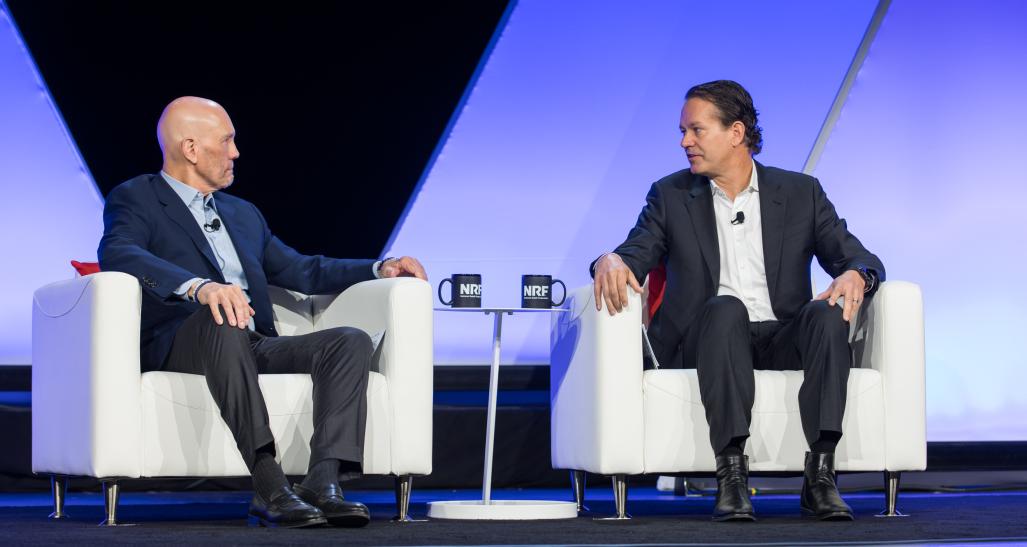
From left: NRF President and CEO Matthew Shay speaks with Walmart U.S. President and CEO John Furner at NRF PROTECT 2023.
Retailers have been dealing with security issues on their own for decades. Now the increase in both the sophistication and violence of retail-targeted crimes has finally caught the attention of the media, the public, community leaders and policymakers in Washington, according to Walmart U.S. President and CEO and NRF Board Chairman John Furner.
“When I was running stores, of course we would have events or shoplifters that would cause some disruption and have to be dealt with,” Furner, a 30-year retail veteran, said during a fireside chat with NRF President and CEO Matthew Shay at NRF PROTECT.
Learn more about how ORC is growing in scope and complexity and read NRF's new report conducted in partnership with K2 Integrity.
“But the amount of what we’re seeing across the country … has increased pretty precipitously over the last three to four years, and the sophistication of the threat actors has also increased.”
The latest NRF report supports Furner’s assertion. The report conducted in partnership with K2 Integrity reveals that organized retail crime has grown in scope, complexity and violence.
Even more alarming than the cost is the increase in the aggression and violence associated with those incidences. According to Shay, 80% of retailers surveyed said they’ve seen a dramatic increase in the violence.
“In my 12 years at NRF, it has become very clear anecdotally, but now very quantifiably, that what is happening with ORC is a growing and persistent threat and an acute challenge. This is what policymakers are starting to understand and appreciate,” Shay said.
“Ultimately this is about the safety and health of customers and communities and those millions of associates and team members and partners that work across the industry.“
Organized retail crime is on the rise. Join us and tell Congress to act now.
Both retail leaders agreed that the increase in violence in retail crime is a reflection of broader issues within society.
“So much of what we’re experiencing as an industry — because there are, in many cases, these are physical locations that people gather in — is a reflection of what is going on broadly across the country,” Furner said.
Solutions will require collaboration and partnership with communities, policymakers at the federal, state and local levels, and law enforcement.
“If this was a retail problem, retailers would have solved it by now,” Shay said. “The elements that contribute to what we’re seeing now are elements that are outside the control of retailers and have to do with all the other elements that are happening outside those communities … . We’ve got tremendous partnerships across the country, but we need to do more to support our law enforcement partners and to generate the right kind of visibility and data to make sure that people know what is happening.”
NRF has seen legislative successes in combatting ORC, Shay noted, including the bipartisan INFORM Consumers Act, which was passed at the end of 2022 as part of the omnibus spending package and signed into law this January, and the introduction of the Combating Organized Retail Crime Act.
“We know that we’re elevating the visibility, but I would say it’s sometimes been slow progress,” Shay said. “The next challenge is helping [people] understand that we can’t do this by ourselves.”
Check out the recap and learn more about NRF PROTECT 2023, covering insights and strategies on loss prevention, asset protection, digital fraud and cybersecurity.
Ultimately, the solution to ORC and retail crime is also going to require retailers of all sizes to share data and work together to raise the visibility of the problem, Furner said.
“This is not an issue we’d ever want to consider a competitive advantage. It is a threat to all of the companies and all of the memberships that we serve,” he noted.
“This is an issue where we should be truly collaborative and work across any line we can because we want to protect the things that so many people before us have built and have enabled us to be in the positions we are in today.”


